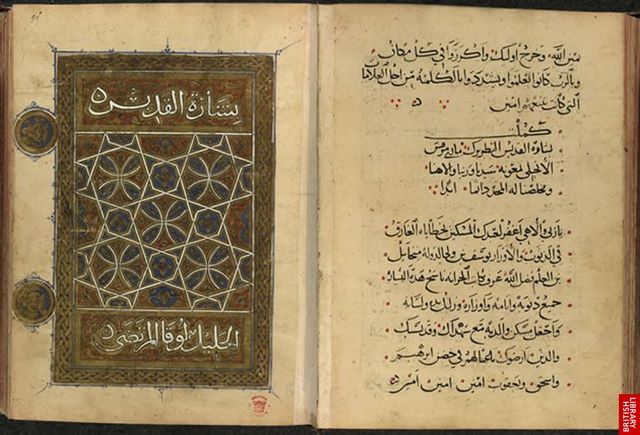Arabic Gospel, 14th century
Arabic Gospel
The Four Gospels in Arabic, Palestine, 1337. Gospel of Luke
This remarkable manuscript is very different to what the casual glance might suggest- despite the Islamic style carpet page, and the Arabic script, this is a Christian document – an account of the Gospels – made in Palestine in the 14th century.
The text on the right-hand page – written in Arabic, which runs right-to-left and downwards – is a portrait of one of the four Evangelists, Luke. He was Syrian, born in Antioch. Ancient manuscripts assert that he died aged 84, having never married or had children. He is the patron saint of physicians and surgeons, and is often depicted in western art as a physician. Luke is often associated with St Paul, whose biblical writings refer to Luke at various times.
According to tradition, he wrote not only his Gospel, but also the Acts of the Apostles, the third and fifth books of the New Testament. He is also said to have painted the first icons- pictures of Mary, Peter and Paul. The Black Madonna of Czestochowa in Poland is claimed to have been painted by Luke.
The earliest manuscript copies of the Four Gospels in Arabic date from the late eighth or ninth centuries, and were made from a variety of languages, including Syriac, Greek and Coptic. Perhaps the oldest dated Arabic copy of the Four Gospels is in the library at Mount Sinai, dated 859. The Harley Trilingual Psalter, from mid-12th century Sicily, contains an Arabic translation of the Psalms made a century earlier.




